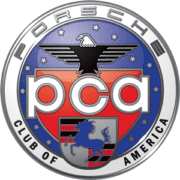Hitting Apexes… July 2015
Hi gang. By the time you read this, we will have just had our famous Paul Miller Ladies Day DE at Pocono and really looking forward to our upcoming event at Canadian Tire Motorsport Park (Mosport). Mosport is a world class track that is well worth the drive and should be on everyone’s list. The other good news for us Americans is that the $$ is currently very strong and this provides a nice “discount” for all your Canadian $$ purchases. Speaking of discounts, if you have been to our 2015 Mid Ohio DE, you will get a $50 discount for Mosport. This also gives you an opportunity to get a $100 discount for our October VIR DE.
Continuing with my driving skill series, I thought I would cover Threshold Braking. This came to mind during a discussion with an NNJR DE student. This individual was convinced they did not need to learn threshold braking because their car has ABS. In addition, they were constantly getting into the ABS and he thought this was helping him be “fast”. No so fast grasshopper……….. I went on to explain what threshold braking really was, how it does apply to cars with ABS and that stomping on the brakes and consistently have ABS activated was very likely unbalancing the car (standing it on its nose), was not making him “fast”. In fact, it was very likely making him slower (ie. Not being able to get on the gas sooner as a result of dealing with a very unsettled car) and braking really hard at the last minute is not a good high performance driving technique. So, how does one learn how to threshold brake?
HOW TO THRESHOLD BRAKE
Threshold braking is the art of slowing down in the quickest possible way by maintaining brake force at the optimum level. It’s tricky and requires a lot of practice in a familiar car before you’ll be able to do it reliably, but braking late before a corner is one of the easiest methods of getting decent track times (but we are not timing, right!!).
But first, two quick facts:
1. Locked wheels are not the most efficient method of slowing down (lots of tire screech is bad)
2. Tires exert maximum braking force when slight wheel slip is occurring (some tire screech is ok)
Is threshold braking still relevant in a world with ABS? In a word, yes. ABS is a reactive system – it detects the onset of a locking wheel and reduces the brake pressure automatically until the wheel has regained grip. When threshold braking, the driver attempts to maintain maximum deceleration without locking wheels, so if ABS has kicked in, then something has gone wrong. However, many modern ABS systems react so quickly to changing conditions that it is becoming more difficult to improve on them, but the best drivers still can – and many track cars do not have ABS.
So, how does one learn this technique?
Step 1:
First you need to become familiar with the point of wheel lock in your car, which means finding suitably safe area to practice on (like a NNJR Car Control Clinic or at one of our AutoX events). Brake hard in a straight line at different speeds (30mph is a good starting point) and get a feel for how the car reacts under rapid braking to the point of wheel lock. Don’t stomp on the pedal, but rather push it firmly and progressively. Get the answers to the following questions clear in your own mind:
• How hard do you need to push the pedal for wheels to lock (or ABS to kick in)?
• What is the sensation just before the point of wheel lock?
• When wheels do start to lock up, what are the warning factors?
• Which wheels lock up first?
• How does the car behave when a wheel has locked?
• Is there any feedback from the brake pedal?
Once you have the answers to these questions, it’s time for…
Step 2:
Now you’re familiar with the sensation of braking hard enough to lock wheels in your car or activate the ABS. Remember, as soon as wheels lose traction with the road you’re no longer braking efficiently – but even the best drivers lock wheels from time to time. So, it’s important to learn how to regain maximum friction as quickly as possible when this happens.
Accelerate to a slightly higher speed (say 50mph) and repeat the process of inducing wheel lock. Try to get to the point of lock as quickly as you can without upsetting the balance of the car. But rather than simply screeching to a halt, release the brake slightly to free up the locked wheel(s), then reapply at a slightly reduced pressure to try and maintain decent braking performance.
Get to the point when you can reliably reduce the brake pressure and reapply the brakes in as little time as possible. Some ABS systems may make this process difficult due to built-in delays in the electronics, and it might be at this point when you decide threshold braking isn’t for you after all!
Step 3:
Now you will have a good feel for the car, appreciate the sensation of heavy braking and understand the point of wheel lock, so it’s time to do the perfect run. Accelerate back up to around 50mph and repeat the process of braking heavily, but this time try to come to a halt as quickly as you can without locking any wheels. Remember, a little bit of tire screech is ok, as long as the wheels haven’t locked.
If a wheel does stop rotating, use the ‘release and reapply’ technique to maintain control of the car.
Repeat as many times as you need to until you can brake reliably without locking wheels – give yourself a pat on the back.
Now all you need to know is how to do it in different track conditions! Next time you are at the track, talk about this with your Instructor and pick a corner (ie. end of a long straight) where you can work on this.
See you out there and remember; no coloring outside the lines.
Tom Iervolino
NNJR – Track Chair


